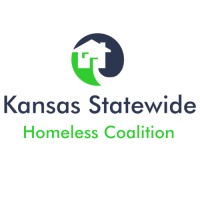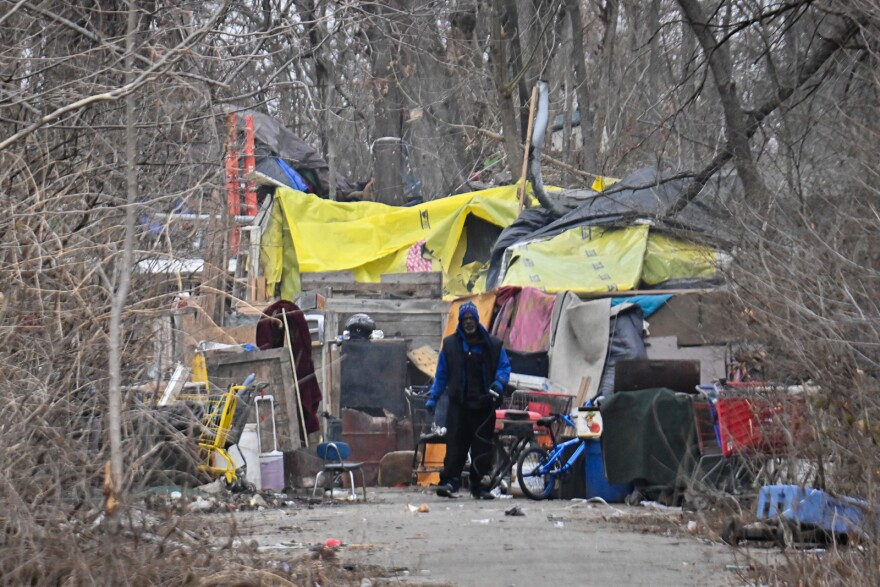KCUR photo
Winston Churchill is credited as coining the phrase “Never let a good crisis go to waste” and that ideology was warmly embraced by those yearning for power and dollars during the Covid Pandemic.
But with Covid hysteria now deflated, government and its vaunted Renfield-like legions of public/private nonprofit organizations have seized on the next new over-reactionary crisis – homelessness – as the new great horizon of opportunity. It is as self perpetuating as the Wuhan lab leak, but ever harder to bring under control.
Indeed, new government and nonprofit initiatives have roided up the core value of Christian charity and air-dropped themselves into the public forefront to valiantly and emotionally take up arms – and public dollars – against this enemy. Their attack on the problem reaches a degree almost equalled by the invasion of ramshackle tent cities, drug addicts and mentally deranged ne’er-do-wells themselves who are indulged and encouraged by these public offerings. As “an abundance of caution” was the rallying cry for the army of Fauci-esque heroes of Covid, so too will “an abundance of caring” be the catchphrase for the massively public funded and oh-so-emotionally compelling regulated solutions forthcoming from the orthodoxy of the substantially heartfelt.

Already, the Kansas landscape is replete with public funds-burning paramedics rushing to the scene with prescriptions of tax money and government-issued “dignity” – like dropping the term “homeless” and replacing it with “people experiencing homelessness” – in order to treat the victims whose lifetimes of bad decisions and inability to manage their own lives has left the public with a new virus:
– “Kansas Housing Resources Corporation (KHRC) is a self-supporting, nonprofit, public corporation that serves as the primary administrator of federal housing programs for the state of Kansas. KHRC delivers solutions to those who are working to end the housing crisis in Kansas,” claims one such social medic website. “The corporation’s vision can only be achieved when all Kansans have the support and resources they need to achieve their goals, no matter where they are in their housing journey.”
From where will those resources come? Conscripted from those with homes of course, although those providers will have no input on policies or procedures or the rules by which their money is spent.

And there’s the new Eastern Kansas homeless mecca of Lawrence/Douglas County, where city and county officials plan to spend $100 million over the next decade to “end homelessness”:
“The Kansas State Homeless Coalition, Inc. (KSHC) is a not-for-profit organization based in Lawrence, KS.” says its website. “Our work is to coordinate with communities throughout the state to provide advocacy, training, education, and support in an effort to end homelessness in Kansas. We also provide remote services to those experiencing homelessness in areas with limited resources.” There is also the Kansas arm of the National Alliance To End Homelessness, a “non-profit organization committed to preventing and ending homelessness in the United States.“

Under these and other funding umbrellas local organizations thrive, each with paid staff to help organize volunteer initiatives, develop “sponsor partners” and write more grants to tap the behemoth of the ever-borrowed federal budget. There’s the Coalition to End Homelessness in Wichita/Sedgwick County; The Kim Wilson Housing Project in Kansas City, Kansas, for the chronically homeless; Hillcrest Transitional Housing for Johnson & Wyandotte counties; The Butler Homeless Initiative in El Dorado; The Wyandotte County Emergency Assistance Coalition; Topeka’s Justice, Unity and Ministry Project (JUMP) has seized its new homelessness initiative to advocate for a “low barrier” homeless shelter; the list goes on.
No one knows the total fiscal drain of the myriad of homelessness projects in Kansas, but a wad of 41 million new dollars was announced earlier this month as earmarked for the state enroute from the U.S. Department of Housing and Urban Development to “end homelessness.”
Assuredly, the effort to “end homelessness” has been an abject and unmitigated failure. Homeless populations in the United States have increased 6% since 2017. Kansas is seeing the increase as well particularly in its politically blue cities like Lawrence, where homelessness increased 51% between 2020 and 2023. This despite record levels of funding devoted to “ending homelessness.”
The analysis of this buffoon strategy to confront homelessness is clear to anyone who’s ever gone on a picnic. Spill more jelly, get more ants.

But to maintain the facade of compassion and “an abundance of caring,” policy makers in government will continue to avoid real answers for homelessness because effective, self-reliant solutions are indeed hard and callous by the established standards. Forced accountability has to be dodged at all costs; consequences for being a societal threat and a fiscal liability, for the invasion and occupation of public and even private spaces, will never be seen as an adequate answer. Options like CCC-style court-ordered work-based housing programs or simple jail time for drug possession and mental health institutionalization are options, but they’ll never be embraced by the “abundance of caring” crowd.
The lucrative and expanding homelessness industry has no incentive and no plan to put an end to its bread and butter. Talk about “Long Covid” – this system will never agree to take a viable vaccine.
Dane Hicks is a graduate of the University of Missouri School of Journalism and the United States Marine Corps Officer Candidate School at Quantico, VA. He is the author of novels "The Skinning Tree" and "A Whisper For Help." As publisher of the Anderson County Review in Garnett, KS., he is a recipient of the Kansas Press Association's Boyd Community Service Award as well as more than 60 awards for excellence in news, editorial and photography.






$100 million? Lawrence/Douglas County city and county officials upped that ante in late April. The article at https://www2.ljworld.com/news/2024/apr/20/funding-braids-will-be-key-to-finding-the-243-million-in-affordable-supportive-housing-called-for-in-a-place-for-everyone-plan/ indicated $243 million was [at that time] the goal. And that was 92% of the $267,741,481 estimated cost to fund all five goal areas.
When the federal government gets more spend-crazy, they just print more currency (ummm, yeah… that deficit thing, but that’s a different topic). State and local governments just slam taxpayers against the wall and frisk them for their earnings.
Maybe that’s why the Douglas County Taxpayers Association group on NextDoor ( https://nextdoor.com/g/vsjgwbxhf/ ) continues to add new members. But in the long run, social media groups don’t mean much without all-in voter rebellion in coming elections. We’ll see…